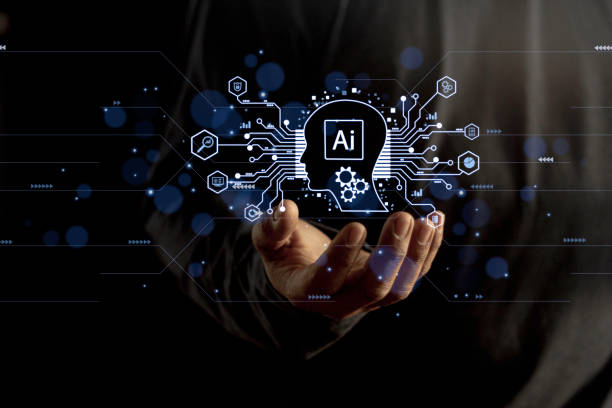What is Artificial Intelligence and What are its Applications?
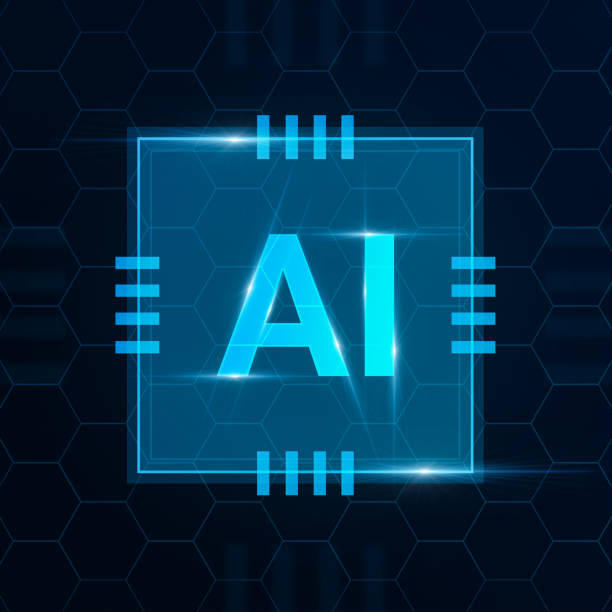
Artificial Intelligence or Artificial Intelligence (#AI), in short, refers to the ability of a machine or computer program to mimic human cognitive functions such as learning, reasoning, problem-solving, and perception.
Unlike traditional programming where explicit instructions are given to the computer, in #Artificial_Intelligence, systems learn and make decisions using algorithms and data.
This learning can be supervised learning, unsupervised learning, or reinforcement learning.
Applications of Artificial Intelligence are vast and growing.
Some of these applications include:
- Medicine: Disease diagnosis, drug development, surgical robots
- Finance: Fraud detection, risk management, financial consulting
- Automotive: Self-driving cars, driver-assistance systems
- Marketing: Personalized advertising, customer behavior analysis
- Manufacturing: Production line automation, quality control
- Education: Adaptive learning systems, virtual tutors
This list is just a glimpse of the countless applications of artificial intelligence.
With technological advancements, AI is expected to play a more prominent role in our daily lives.
Do you dream of a thriving online store but don’t know where to start?
Rasawob is your comprehensive solution for e-commerce website design.
✅ Attractive and user-friendly design
✅ Increased sales and revenue⚡ Get a free consultation
Machine Learning and its Role in Artificial Intelligence
![]()
Machine Learning (Machine Learning) is a core subfield of Artificial Intelligence that enables systems to learn from data without explicit programming.
In other words, instead of telling the computer how to perform a task, we provide it with data and allow it to discover patterns and relationships on its own.
Machine learning algorithms are divided into various types based on the type of data and the objective they pursue:
- Supervised Learning: In this method, the system is trained using labeled data.
For example, to train an image recognition system, we provide it with images of cats and dogs along with their respective labels. - Unsupervised Learning: In this method, the system is trained using unlabeled data.
The goal is for the system to discover hidden patterns and structures within the data.
For example, unsupervised learning can be used to cluster a company’s customers based on their purchasing behavior. - Reinforcement Learning: In this method, the system learns how to optimize a specific goal by trial and error in an environment.
For example, reinforcement learning can be used to train a game-playing robot.
Machine learning plays a crucial role in the advancement of Artificial Intelligence.
Many advanced applications of Artificial Intelligence, such as self-driving cars and facial recognition systems, are based on machine learning algorithms.
Neural Networks and Deep Learning

Neural Networks (Neural Networks) are computational models inspired by the structure of the human brain.
These networks consist of many interconnected nodes (neurons) arranged in layers.
Each neuron receives an input signal, processes it, and produces an output signal.
Deep Learning (Deep Learning) is a subset of machine learning that uses deep neural networks (networks with many layers) for learning.
Deep neural networks are capable of learning complex and abstract patterns from data.
This characteristic has led deep learning to achieve excellent results in many fields, such as image recognition, natural language processing, and speech recognition.
The main difference between traditional neural networks and deep neural networks lies in the number of layers and their complexity.
Deep neural networks, due to having more layers, are capable of learning more complex features from data.
Deep learning has been one of the main drivers of Artificial Intelligence advancements in recent years.
Many advanced applications of Artificial Intelligence, such as self-driving cars and machine translation systems, are based on deep neural networks.
Below is a sample table of neural network types and their applications:
| Neural Network Type | Applications |
|---|---|
| Convolutional Neural Networks (CNN) | Image recognition, video recognition |
| Recurrent Neural Networks (RNN) | Natural language processing, machine translation |
| Generative Adversarial Networks (GAN) | Image generation, text generation |
Natural Language Processing and Text Understanding
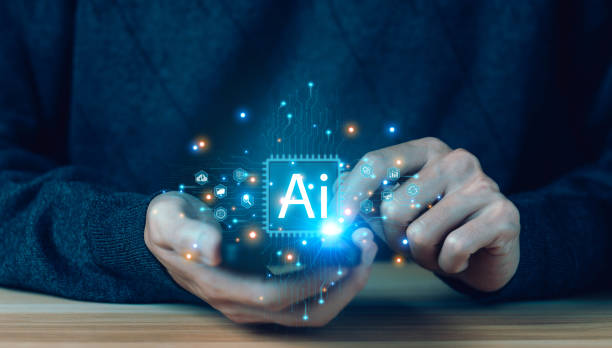
Natural Language Processing (Natural Language Processing) (#NLP) is a branch of Artificial Intelligence that enables computers to understand and generate human language.
The goal of natural language processing is to create systems that can analyze text, answer questions, perform machine translation, and interact with humans in natural language.
Text understanding is one of the most significant challenges in natural language processing.
To understand text, a computer must be able to grasp the meanings of words, sentences, and paragraphs, and identify the relationships between them.
This task is highly complex, as human language is often ambiguous, informal, and context-dependent.
Applications of Natural Language Processing are very extensive.
Some of these applications include:
- Machine Translation: Automatic translation of text from one language to another
- Sentiment Analysis: Detecting emotions present in a text (e.g., positive, negative, or neutral)
- Chatbots: Systems that can converse with humans in natural language
- Text Summarization: Generating a short summary of a long text
- Spam Detection: Identifying unwanted emails
With the advancement of deep learning algorithms, natural language processing has achieved significant breakthroughs.
Today, natural language processing systems can perform many tasks with high accuracy.
Are you annoyed by losing customers who visited your site to make a purchase?
Rasawob is your specialized solution for having a successful online store.
✅ Significantly increase your online sales
✅ Build trust and professional branding among customers⚡ Get a free consultation from Rasawob experts!
Computer Vision and Image Recognition

Computer Vision (Computer Vision) is a branch of Artificial Intelligence that enables computers to understand images and videos.
The goal of computer vision is to create systems that can detect objects in images, interpret scenes, and track movement.
Image recognition is one of the most important tasks in computer vision.
For image recognition, the computer must be able to identify and locate different objects in an image.
This task is highly challenging because images can be very diverse, and lighting conditions and viewing angles can vary.
Applications of Computer Vision are very extensive.
Some of these applications include:
- Self-driving cars: Detecting traffic signs, pedestrians, and other vehicles
- Security systems: Facial recognition, intrusion detection
- Medicine: Diagnosing diseases from medical images
- Manufacturing: Quality control, defect detection
- Agriculture: Pest detection, crop yield estimation
With the advancement of deep learning algorithms, computer vision has achieved significant breakthroughs.
Today, computer vision systems can perform many tasks with high accuracy.
Robotics and Artificial Intelligence
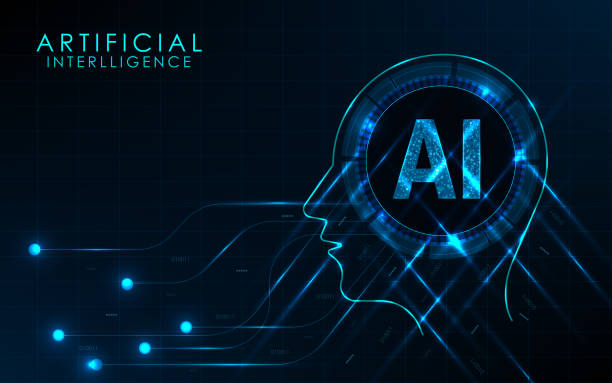
Robotics and Artificial Intelligence are two related fields that are increasingly converging.
Robotics deals with the design, construction, operation, and application of robots, while Artificial Intelligence focuses on developing systems that can perform tasks typically requiring human intelligence.
The combination of these two fields leads to the creation of intelligent robots that can interact with their environment, learn, and make decisions.
These robots can be used in a wide range of applications, including manufacturing, healthcare, logistics, and customer service.
Applications of Robotics and Artificial Intelligence are as follows:
- Manufacturing: Industrial robots that can perform repetitive and dangerous tasks with high accuracy and speed
- Healthcare: Surgical robots, rehabilitation robots, and nursing robots
- Logistics: Warehouse robots, delivery robots, and drones
- Customer Service: Chatbots and service robots that can answer questions and assist customers
With technological advancements, intelligent robots are expected to play a more prominent role in our daily lives.
What Will Be the Future of Artificial Intelligence?

Predicting the future of Artificial Intelligence is a difficult task, but by examining current trends and technological advancements, a vision can be provided.
Artificial Intelligence is expected to achieve significant progress in the future and play a more prominent role in our lives.
Some of the key trends in Artificial Intelligence include:
- Advancements in deep learning: Deep learning algorithms are continuously improving and capable of solving more complex problems.
- Increase in available data: The volume of data available for training Artificial Intelligence algorithms is exponentially increasing.
- Decreasing computational cost: The computational cost required for training and running Artificial Intelligence algorithms is continuously decreasing.
Given these trends, it can be expected that:
- AI will penetrate all fields: Artificial Intelligence is currently applied in many fields and is expected to be used in even more areas in the future.
- Intelligent systems will become more autonomous: In the future, intelligent systems will be able to make decisions and act without human intervention.
- AI will help improve the quality of life: Artificial Intelligence can help improve healthcare, education, transportation, and many other aspects of life.
Below is a table of opportunities and challenges facing Artificial Intelligence:
| Opportunities | Challenges |
|---|---|
| Improved efficiency and productivity across various industries | Ethical concerns related to data privacy and algorithms |
| Creation of new job opportunities in AI-related fields | Replacement of human workforce with automated systems |
| Advancement in medical sciences and disease treatment | Potential misuse of AI in military and security fields |
Ethical and Social Issues of Artificial Intelligence
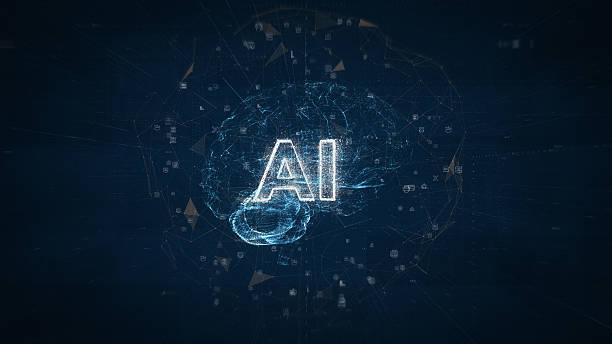
The rapid advancement of Artificial Intelligence raises important ethical and social issues that need to be addressed.
These issues include:
- Privacy: Artificial Intelligence systems require large volumes of data for their operation, which may include individuals’ personal information.
The collection, storage, and use of this data must be carried out with respect for individuals’ privacy. - Bias: Artificial Intelligence algorithms can learn and reinforce biases present in training data.
This can lead to discrimination in the decision-making of Artificial Intelligence systems. - Accountability: If an Artificial Intelligence system makes a mistake, determining accountability can be difficult.
Who is responsible? The developer, the user, or the system itself? - Workforce displacement: Artificial Intelligence can automate many jobs, which can lead to job losses and increased inequality.
To address these issues, it is necessary to:
- Develop ethical standards for the development and use of Artificial Intelligence.
- Design Artificial Intelligence algorithms to be transparent and explainable.
- Provide training programs to help individuals adapt to changes brought about by Artificial Intelligence.
Given the importance of these issues, it is necessary to discuss and exchange views on them and find appropriate solutions.
Are you concerned about your e-commerce site’s low conversion rate and not achieving your desired sales?
Rasawob is your specialized solution for having a successful online store.
✅ Significantly increase conversion rates and sales
✅ Professional and user-friendly design to attract customer satisfaction
⚡ Ready for a transformation in online sales? Get a free consultation!
How to Learn Artificial Intelligence?
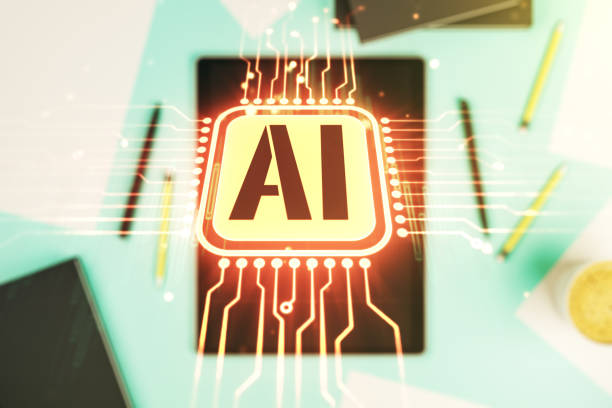
Learning Artificial Intelligence can be a significant challenge, but with proper planning and the right resources, this path can be navigated.
To get started, you can follow these steps:
- Learn the basic concepts: First and foremost, you need to learn the fundamental concepts of mathematics (such as linear algebra, calculus, and statistics) and computer science (such as algorithms and data structures).
- Learn a programming language: To work with Artificial Intelligence, you need to learn a programming language like Python.
Python is a powerful and flexible programming language with many libraries for working with Artificial Intelligence. - Learn AI libraries: After learning Python, you should learn Artificial Intelligence libraries such as NumPy, Pandas, Scikit-learn, TensorFlow, and PyTorch.
These libraries provide powerful tools for performing various Artificial Intelligence tasks. - Work on practical projects: The best way to learn Artificial Intelligence is by working on practical projects.
By doing practical projects, you can apply your knowledge and strengthen your skills. - Utilize online resources: There are many online resources available for learning Artificial Intelligence, including online courses, e-books, articles, and blogs.
Patience and perseverance are necessary for learning Artificial Intelligence.
With continuous effort and practice, you can achieve success in this field.
Advanced Topics in Artificial Intelligence

After mastering the basic concepts of Artificial Intelligence, you can move on to more advanced topics.
Some of these topics include:
- Deep Reinforcement Learning: A combination of reinforcement learning and deep learning used to solve complex problems in dynamic environments.
- Advanced Natural Language Processing: Includes techniques such as large language models, transformers, and recurrent neural networks, used for high-accuracy understanding and generation of human language.
- Advanced Computer Vision: Includes techniques such as object detection, image segmentation, and facial recognition, used for high-accuracy understanding and analysis of images and videos.
- Explainable Artificial Intelligence (XAI): Focuses on developing Artificial Intelligence systems that can explain their decisions.
- Ethical Artificial Intelligence: Deals with ethical and social issues related to Artificial Intelligence.
Learning these advanced topics can help you specialize in Artificial Intelligence and tackle complex problems.
Frequently Asked Questions
| Question | Answer |
|---|---|
| What is Artificial Intelligence? | It is the simulation of human intelligence in machines programmed to think like humans and imitate their actions. |
| What are the main branches of Artificial Intelligence? | They include Machine Learning, Deep Learning, Natural Language Processing, Computer Vision, and Robotics. |
| What is Machine Learning? | It is a branch of Artificial Intelligence that focuses on enabling systems to learn from data and identify patterns without explicit programming. |
| Mention examples of Artificial Intelligence applications in our daily lives. | Voice assistants (like Siri and Alexa), recommendation systems on Netflix and Amazon, self-driving cars, and facial recognition software. |
| What is Deep Learning? | It is a subset of Machine Learning that uses artificial neural networks with multiple (deep) layers to process large amounts of data. |
| What is Natural Language Processing (NLP)? | It is a branch of Artificial Intelligence that focuses on enabling computers to understand, interpret, and generate human language. |
| What are some ethical concerns related to Artificial Intelligence? | They include data bias, privacy, job displacement, and accountability in case of errors. |
| What are the main benefits of Artificial Intelligence? | Increased efficiency, improved decision-making, automation of repetitive tasks, and discovery of complex patterns in data. |
| How is Artificial Intelligence used in healthcare? | In disease diagnosis, drug discovery, medical image analysis, and personalized patient care. |
| How do you see the future of Artificial Intelligence? | It is expected to continue evolving rapidly, impacting all aspects of human life, from industry to education and entertainment. |
And other services of Rasawob advertising agency in the field of advertising
- Smart Brand Identity: Designed for businesses seeking to increase sales through attractive UI design.
- Smart Data Analysis: Designed for businesses seeking to analyze customer behavior through Google Ads management.
- Smart Reportage: Professional optimization for customer behavior analysis using precise audience targeting.
- Smart Direct Marketing: A dedicated service for growth in sales increase based on user experience customization.
- Smart Advertising Campaign: Revolutionize click-through rates with the help of user experience customization.
And over hundreds of other services in the field of internet advertising, advertising consultation, and organizational solutions.
Internet Advertising | Advertising Strategy | Advertorials
Sources
? With Rasawob Afarin, transform your business in the digital world! We pave your path to online success by providing comprehensive digital marketing services, including corporate website design, SEO, and social media management. Shine with us and reach the peaks of your business.
📍 Tehran, Mirdamad Street, next to Bank Markazi, Southern Kazeroon Alley, Ramin Alley, No. 6

